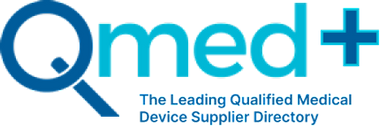AssurX has been in the business of configuring and implementing Enterprise Quality Management Solutions for two decades, and over that time, it has been a consistent finding that audit management tends to reside near the end the typical EQMS process implementation schedule.
AUGUST 3, 2015 BY JEFF MAZIK
AssurX has been in the business of configuring and implementing Enterprise Quality Management Solutions for two decades, and over that time, it has been a consistent finding that audit management tends to reside near the end the typical EQMS process implementation schedule.
Why does the management of audits always seem to take a back seat to other processes like CAPA, document control, and complaints, when it comes to implementing an enterprise quality management system?
There are quite a few factors here, but what we’ve experienced when a company begins looking at purchasing an EQMS and eventually determining a rollout schedule is this typical implementation hierarchy:
- CAPA
- Nonconformances
- Complaints Management
- Document Management
- Training Management
- Audit Management
The order of these may fluctuate a bit due to an individual company’s need, but unfortunately audit management, although important during the RFP and selection process, tends to be pushed back to later in the implementation rollout plan. Some of the reasons why this is the case include statements we’ve heard such as:
“Auditors can continue to do their work on spreadsheets for the time being.”
“Doing audits in the system doesn’t provide an immediate or significant ROI”
“Implementing audits in the EQMS system is not as regulatory impactful as much as the others.”
“Outside auditors focus on other EQMS processes first.”
But there are significant advantages with moving the audit management process up earlier in the implementation project:
- The implementation of the audit management process does not necessarily use the same implementation team as the other processes, with the possible exception of IT and QA resources. So it is likely that a separate project team can focus on getting this process implemented and validated.
- The audit management process may not need to be initially tied to other EQMS systems, and those integrations can be implemented, at a later time, when the additional process(es) are ready. Even the common scenario where the initiation of a CAPA from an audit finding can be done manually until the CAPA system is up and integration has been accomplished.
- The audit management process is relatively simple to setup, validate, and use. Typically, AssurX has found that there is not a lot of required configuration changes from our out-of-the-box audit management solution, so the system can be implemented, validated, and in use quickly. The added benefit here is that once one process is implemented and available, this can aid in getting early buy-in for the system and increase the momentum for getting other processes within the EQMS system rolled out.
- Auditors themselves become early adopters of the EQMS system used at the company. This results in auditors who are more familiar with the system as a whole, which can in turn, assist their understanding when he/she conducts audits on other implemented EQMS processes that are using the same system.
 So when planning out your EQMS process rollout schedule, I hope you see that there are some valid reasons to move your audit management process to earlier in the overall implementation project. If you look closer, you may just find some additional reasons at your own company on why this would be advantageous to be implemented early. Just don’t simply follow crowd, and relegate audit management to the end of the project without taking a serious look at why.
So when planning out your EQMS process rollout schedule, I hope you see that there are some valid reasons to move your audit management process to earlier in the overall implementation project. If you look closer, you may just find some additional reasons at your own company on why this would be advantageous to be implemented early. Just don’t simply follow crowd, and relegate audit management to the end of the project without taking a serious look at why.A webcast is available to you for more details on the audit management process and how it can be used to complete your Enterprise Quality Management System.
About AssurX, Inc.
AssurX, Inc. provides global companies with enterprise quality management systems and regulatory compliance software solutions. AssurX’s flexible, all-in-one system automates quality and compliance related processes so issues can be centrally managed—from detection to corrective action and trend analysis. It helps collect, organize, analyze and share information to better manage risk and improve quality and compliance performance everywhere in the enterprise.
For the latest industry insights and updates go to http://blog.assurx.com

